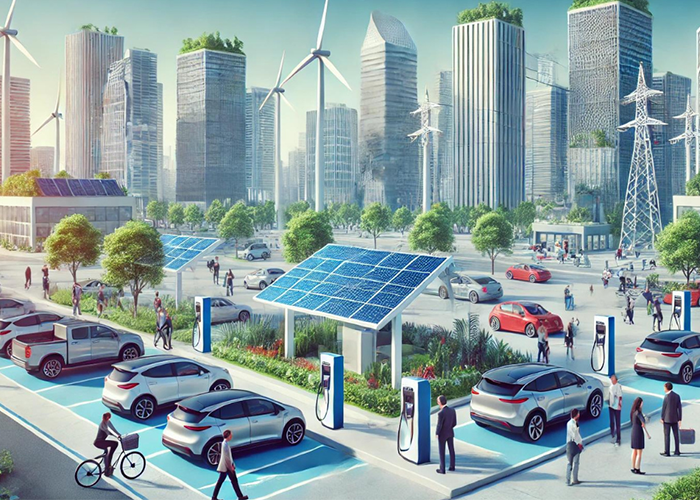As the world shifts towards electric vehicles (EVs), the demand for EV charging infrastructure is on the rise. However, the increased energy demand for EV charging can strain the grid and lead to higher greenhouse gas emissions. To mitigate this, powering EV charging infrastructure with renewable energy sources like solar, hydro, wind, and biogas is a game-changer.
In this blog, we’ll explore the benefits of using renewable energy to power EV charging infrastructure and highlight successful examples from around the world.
Why Renewable Energy for EV Charging?
- Reduced Greenhouse Gas Emissions: Renewable energy sources like solar, hydro, and wind power generate electricity without emitting greenhouse gases, reducing the carbon footprint of EV charging.
- Energy Independence: Renewable energy can reduce reliance on fossil fuels, promoting energy independence and enhancing energy security.
- Lower Operating Costs: Renewable energy sources can provide stable and predictable energy costs, reducing the operating expenses of EV charging infrastructure.
Renewable Energy Sources for EV Charging
- Solar Power: Solar panels can be installed on-site at EV charging stations, providing a decentralized and renewable energy source.
- Hydro Power: Hydroelectric power plants can supply renewable energy to EV charging infrastructure, particularly in regions with abundant water resources.
- Wind Power: Wind turbines can generate electricity for EV charging infrastructure, reducing reliance on fossil fuels and lowering greenhouse gas emissions.
- Biogas: Biogas generated from organic waste can be used to produce electricity for EV charging infrastructure, promoting a circular economy.
Successful Examples from Around the World
- Tesla’s Solar-Powered Superchargers: Tesla has installed solar panels at many of its Supercharger stations, reducing reliance on the grid and promoting sustainable energy.
- Hydro-Québec’s EV Charging Network: Hydro-Québec, a Canadian utility company, has developed an EV charging network powered by hydroelectricity, providing a renewable energy source for EV owners.
- Wind-Powered EV Charging in Denmark: Denmark’s largest energy company, Ørsted, has installed wind turbines to power EV charging infrastructure, reducing greenhouse gas emissions and promoting sustainable energy.
- Biogas-Powered EV Charging in Sweden: A Swedish company, Gasum, has developed a biogas-powered EV charging station, showcasing the potential of biogas as a renewable energy source for EV charging.
Conclusion
Powering EV charging infrastructure with renewable energy sources like solar, hydro, wind, and biogas is a crucial step towards a sustainable transportation future. By reducing greenhouse gas emissions, promoting energy independence, and lowering operating costs, renewable energy can play a vital role in accelerating the adoption of EVs.
As the demand for EV charging infrastructure continues to grow, it’s essential that we prioritize renewable energy sources to power these systems. By doing so, we can create a more sustainable, equitable, and environmentally friendly transportation ecosystem for generations to come.
What do you think? Share your thoughts on the importance of renewable energy for EV charging infrastructure and how we can work together to create a more sustainable transportation future.


